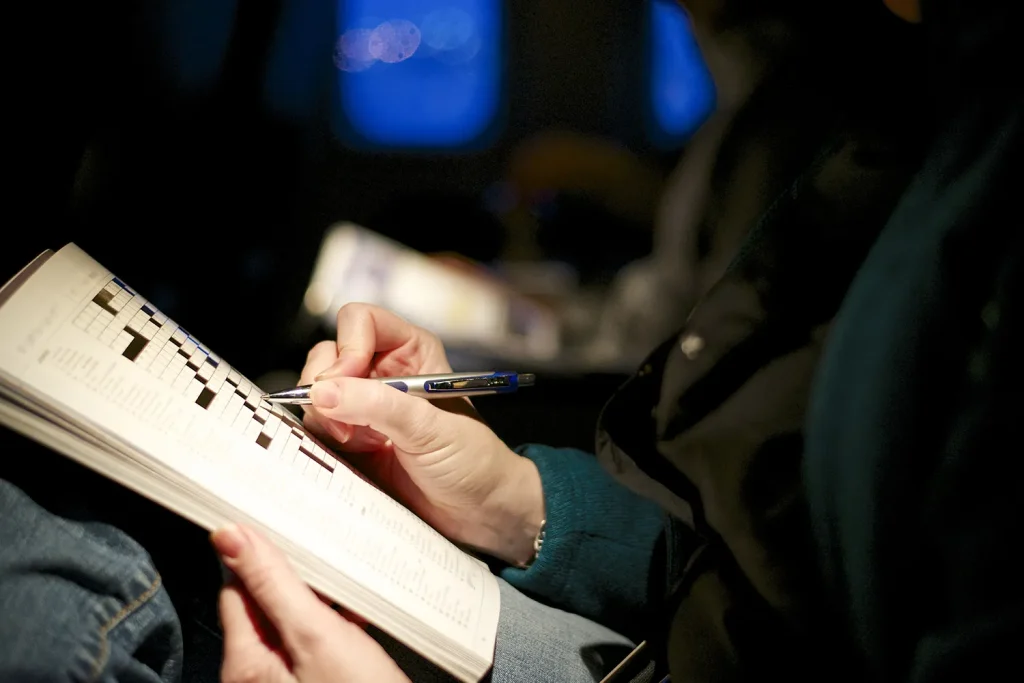It’s Not a Charger or a Passport — Travel Experts Say a Pen Might Be the Most Important Thing You Can Bring on a Flight
In an era of wireless earbuds, travel-size chargers, and high-tech luggage trackers, the humble pen doesn’t exactly scream “must-have travel essential.” Yet according to flight attendants, frequent fliers, and travel experts, that simple, often-forgotten item might just save you from a world of mid-air frustration. When you think about it, it’s easy to understand why: a pen weighs almost nothing, takes up no space, and can instantly solve a surprisingly wide range of problems — from filling out customs forms to exchanging phone numbers with a local guide in a country where Wi-Fi won’t cooperate.

Veteran travelers know this lesson well. “It’s one of those things you never think you’ll need — until you do,” says Mark Ellis, a frequent flier who has logged over 2 million miles for work. “The moment the flight attendant hands you a customs card and you realize you don’t have anything to write with, that’s when you remember.” Ellis says he now keeps two pens in his carry-on — one in an easily accessible pocket and a backup tucked inside a passport wallet. “It’s like insurance,” he says. “You don’t think about it until you’re desperate for it.”
International flights, in particular, are where the absence of a pen can become painfully obvious. Most countries still require travelers to fill out arrival and customs declaration forms manually, even in an increasingly digital world. The process usually happens mid-flight, just before landing, when passengers are already tired, cramped, and ready to be off the plane. That’s when the scramble begins — one person asking another if they can borrow a pen, which is then passed down the aisle like a lifeline. “It’s amazing to watch 300 people share one pen,” laughs Sarah Kim, a flight attendant for a major international airline. “You’d think it was gold.”
Kim has worked in aviation for more than a decade and says she always carries a handful of extra pens in her apron pocket, just in case passengers forget. “It’s one of the most requested items, second only to water,” she says. “People can go eight hours without talking to anyone, but the second those forms come out, you hear, ‘Does anyone have a pen?’ in every language.” She adds that some passengers even try to borrow one from the crew — a request that’s not always simple. “We technically aren’t supposed to hand out personal items, so if I give you a pen, I’ll probably never see it again,” she says, half-jokingly. “I’ve lost more pens than I can count.”

Beyond the obvious uses, a pen can also be surprisingly helpful for unexpected travel situations. For one, technology doesn’t always cooperate at 30,000 feet. Whether it’s a phone dying before you’ve jotted down an important confirmation number or Wi-Fi failing just when you need to sign a paper boarding document, sometimes analog really is the backup plan. “Not everything has gone digital yet,” says Lindsay Rosen, a travel planner who works with clients across Asia and Europe. “In some countries, small guesthouses or taxis still hand you handwritten receipts or notes. Having a pen ready is just smart travel etiquette.”
Rosen also points out that some travel emergencies — like delayed flights or rerouted connections — can leave travelers needing to fill out claim forms or rebooking paperwork in person. “When things go wrong at airports, you’ll see people rushing to desks with documents in hand,” she says. “Having a pen might sound basic, but it keeps you one step ahead of everyone else in line.” It’s a small detail that can save time, and in travel, time often means opportunity — whether it’s catching a tight connection or being the first to secure a rebooked seat on the next flight.
Interestingly, pens have even found a second life as versatile tools among seasoned travelers. “You can use a pen for way more than writing,” says Ellis. “I’ve used one to reset a SIM card, open a tray table latch that jammed, or even press an elevator button when I didn’t want to touch it.” Some survivalists even keep a small metal pen for emergency purposes — sturdy enough to break glass in extreme situations or used as a makeshift stylus for touchscreen kiosks. “It’s not just about ink,” he adds. “It’s about practicality.”
Travel psychology also plays a subtle role. Experts note that physically writing something down can help travelers stay grounded and mindful — especially in stressful travel situations. Dr. Heather Caldwell, a behavioral scientist who studies travel stress, says, “Airports and airplanes create sensory overload. The act of writing — even something small, like a reminder or a gratitude note — helps regulate your thoughts and gives you a sense of control.” She adds that journaling during travel, even briefly, can make trips feel more meaningful and improve memory recall later. “When you write down how you felt seeing a sunset from a plane window, you’re preserving that memory more vividly than if you just snapped a photo,” Caldwell explains.

It’s also worth noting that pens aren’t created equal in the travel world. Frequent fliers swear by specific types, like pressurized space pens that can write at high altitudes or on glossy paper, and multi-ink pens that save space while offering different colors for travel documents. “I always bring a pen with a clip,” says Kim, the flight attendant. “That way I can attach it to my uniform or bag without losing it mid-flight.” She says the number one rule of travel pens is to avoid those with removable caps — they tend to roll away easily and dry out faster in the low humidity of airplane cabins.
Of course, no one is saying a pen is as essential as a passport or boarding pass, but it occupies a special niche of overlooked usefulness. “It’s not glamorous, but it’s dependable,” Rosen says. “You can lose your charger and still survive. Lose your pen before customs, and you might be waiting 20 minutes just to borrow one.”
Even the smallest details of travel etiquette can reveal who’s prepared and who’s not. Travel veterans say a pen is the mark of a seasoned traveler — someone who has learned from experience. “It’s like the person who has an extra pair of socks or always carries tissues,” says Ellis. “You can tell they’ve been through it before. They’ve learned the small lessons.”
There’s also an unspoken sense of camaraderie around the pen — one of the last analog symbols of connection in an increasingly digital world. “When you lend someone a pen on a plane, you’re sharing something universal,” Kim says. “It doesn’t matter where you’re from or what language you speak — everyone understands that gesture.” She recalls moments when lending a pen sparked friendly conversations with passengers from different countries. “It’s a small thing, but travel is built on small interactions,” she says. “Sometimes a borrowed pen turns into a story shared over coffee when you land.”
Frequent travelers also note how the pen represents preparedness in a broader sense — a reflection of mindset. Packing a pen isn’t just about writing; it’s about expecting the unexpected. “It reminds you that travel is about adaptability,” Rosen says. “Technology is amazing, but it’s not foolproof. Sometimes, being ready for simple things makes all the difference.”
The beauty of this travel tip lies in its simplicity. You don’t need to buy an expensive gadget or learn a new app — just toss a pen into your bag. It’s timeless advice that feels almost poetic in its practicality. From cramped airplane seats to border control lines that seem endless, a pen remains one of the few travel tools that hasn’t lost its relevance in decades. It’s also one of the few items that can make you the hero of your row when someone else inevitably forgot theirs.
At the end of the day, the pen represents something bigger than convenience. It’s a tiny symbol of self-sufficiency in a world that often feels too dependent on technology. “Traveling makes you resourceful,” says Caldwell. “The pen is part of that spirit — small, reliable, and always ready.” And while most people won’t realize its importance until they’re fumbling for one at 36,000 feet, the ones who carry it know: sometimes, the smallest thing in your pocket can make the biggest difference in your journey.
So next time you’re zipping up your carry-on, double-check that you’ve packed your essentials: passport, charger, headphones — and a pen. Because when you’re somewhere between time zones, juggling paperwork, or simply jotting down the address of a new café, that little pen might just be the most powerful travel tool you have.

